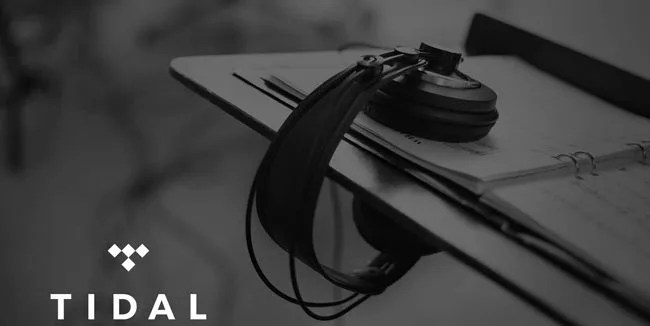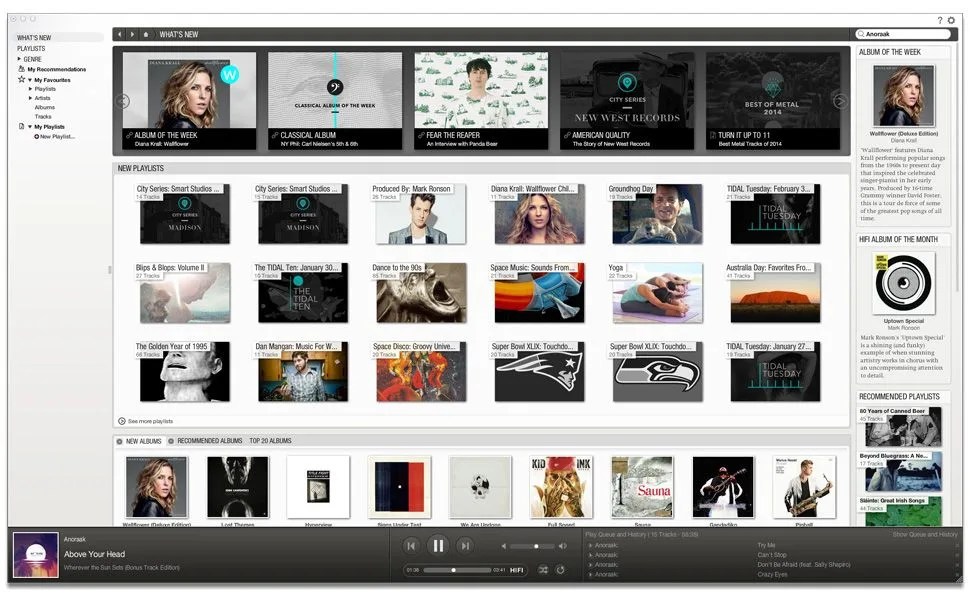In the past decade, MP3s and iTunes effectively standardized audio quality — a win for some, a loss for others. For the audiophiles who lament the denigration of their high and low frequencies, take heart — a plethora of new high-res music players by Sony, Astell & Kern and Pono, along with a new breed of subscription services that offer higher-fidelity music, are all making 2015 the year of streaming hi-fi sound. Tidal, a new lossless streaming service, launched in the US, Canadian, and UK markets in 2014 (and has operated under the name WiMP in Denmark, Germany, Norway, Poland, and Sweden) is something like Spotify with better-quality audio. And, you may have heard, Jay Z’s S. Carter Enterprises recently announced it is buying a majority stake in the Swedish parent company, Aspiro, which virtually guarantees that the hi-fi service will expand in the States.
More Gear for the Audiophile: Best Noise Canceling Headphones | 8 Bluetooth Speakers | The $80,000 Speakers
Tidal gives you unlimited streaming of its catalog of more than 25 million tracks and high-def videos. The service works on Android and iOS devices (including portable high-res players) as well as Macs and PCs, and a growing number of multi-room wireless speaker systems by Sonos, Meridian, Harman Omni, Denon and Dynaudio (as well as those that run on the DTS Play-Fi streaming standard). As on other streaming services, you have the option to download music to a laptop, smartphone, or tablet — up to 3 devices — for offline listening. You can make and share playlists and save your favorite music. The primary difference is the price. Spotify’s Premium service (not to mention that of Beats Music, Google Play Music and others), is $9.99 per month, whereas Tidal costs $19.99 per month. And there’s a reason for the higher price. Tidal’s tracks are 44.1 kHz/16-bit lossless audio files that are three to four times the bit rate of any of its subscription-based streaming competitors. (Lossless audio’s bit rate is 1,411 kbps, versus a “lossy” iTunes AAC 256kbps file and Spotify’s “Extreme” quality at 320kbps.)
The sound on Tidal tracks is fuller, with more accurate spatial representation than on iTunes and Spotify.
For a track to stream at a bit rate of 256kbps or 320kbps, it has to be reduced by shaving away frequencies at the top and bottom end, as well as information before and after the louder elements in the music. You end up not hearing subtle separations in sound, full bass, accurate spatial representation, and even some instruments, like snare drums, high hats, castanets, or the strumming of guitars (at the very least, they can sound muffled and metallic). Lossless, on the other hand, still compresses the file when it’s streaming, but unpacks it to its original CD quality when it gets to your player (like a .zip file), with no loss in sound quality. The proof is in the pudding, as I have discovered over the course of the past three months testing Tidal without the aid of a digital-to-analog converter (DAC) or other audio enhancement on a variety of headphones — the Shure SRH 1540, Bang & Olufsen BeoPlay A6, the KEF M500, and the RHA MA 750i earbuds — connected to an iPhone 6 Plus, an iPad Air 2, a MacBook Air, a Samsung Note Edge, and a Microsoft Surface Pro 3. I also listened to the service wirelessly via AirPlay on a Cambridge Audio Minx Air 200 speaker and via Bluetooth on a Bang & Olufsen A2 speaker. The Tidal service also connected seamlessly with the infotainment systems on recent test drives with a Chevrolet Tahoe and a Corvette Z06 with MyLink capability, showing album art and allowing for control via the same dashboard buttons that work with iTunes.


![align="alignnone" class="inline-offset-r" width="325"]](https://1llimited.info/wp-content/uploads/sites/2/2015/02/Tidal-ambiance2-jpg.webp?w=325)